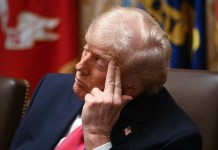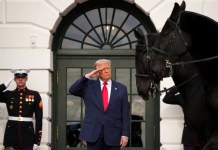The Second India-U.S. 2+2 Ministerial Dialogue took place in Washington on December 18 where the two sides reached a number of agreements and reaffirmed to intensify their strategic partnership.
BrahMos Missile Now Capable Hitting Deep Into China; Entire Pakistan
India and the US also signed the Industrial Security Annex (ISA) that allowed American companies to partner Indian state-owned companies and share sensitive defence technologies. As reported by the EurAsian Times earlier, It was the first time New Delhi has entered into such a pact with any country, although the United States has such agreements in place with several countries.
Industrial Security Annex (ISA): The Industrial Security Annex (ISA) to the India-U.S. General Security of Military Information Agreement (GSOMIA) will provide a structure for exchange and security of classified defence information between the U.S. and Indian defence industries. Currently, under GSOMIA, such data is interchanged between the Government authorities of the two countries but not between private parties. It will enable greater industry-to-industry collaboration.
“The convening of the dialogue and the signing of the Industrial Security Annex indicated general progress in the US-India military and security cooperation.” According to Lou Chunhao, Deputy Director of the Institute of South Asian Studies at the China Institutes of Contemporary International Relations(CICIR), the ISA came just in time for the Modi administration.
Modi has been aggressively promoting defence reforms in the country. India selected foreign suppliers through public bidding and requested full or partial technology transfer for “Made in India” initiative.
The signing of Industrial Security Annex will likely clear the obstacles for India to make American weapons and push the implementation of a number of joint projects.
Why are ASEAN Leaders Thronging India on 26th January, Republic Day 2018?
“The 2019 2+2 Ministerial Dialogue isn’t as fruitful as expected compared with previous ones,” said Lou Chunhao, adding that although both sides emphasized the significance of military and defence cooperation, yet the dialogue remained in the stage of reaching strategic consensus and alignment on the Indo-Pacific order as far as their cooperation status and level is concerned.
Ever since the Trump administration put forth the Indo-Pacific strategy, Washington has been trying to convince New Delhi into joining its military and security layout in the region, and the 2+2 Ministerial Dialogue has become an important mechanism to advance that strategy.
The two sides discussed a wide range of topics during the dialogue this year and released many signals both before and after it, but they didn’t sign the Basic Exchange and Cooperation Agreement (BECA) for Geo-Spatial Cooperation as expected, which is believed to be able to improve their coordination ability and reduce the defence cooperation cost.
India Playing Double Game with China, Russia and US: Chinese Media
It’s worth noting that during the dialogue, large-scale protests were staged in India, which escalated into riots, because of the promulgation of the Citizenship Amendment Act that determines immigrants’ citizenship based on their religious belief. Washington didn’t respond to that, but US media voiced discontent with the situation and put the dialogue in an awkward position. The media also revealed that Trump is scheduled to visit India early next year, and some important agreements may be discussed and signed by that time if the visit takes place as planned.
“Washington and New Delhi both have their own calculations, making it impossible for them to keep completely in step.” In Lou Chunhao’s opinion, the US expects India to play a critical role in implementing the Indo-Pacific strategy, enabling it to safeguard its economic and security interests in the region and sharing its defence expenses there.
BrahMos Missile Now Capable Hitting Deep Into China; Entire Pakistan
But India itself expects to gain political and military interests by leveraging on the US. Politically, it wants to merge into the US-built Indo-Pacific security framework, consequently enhance its influence in the Indian Ocean and obtain more bargaining chips in the region. Militarily, it eyes America’s latest military equipment and technologies and the unconditional security commitment.
At present, although the US-India military and security cooperation is warming up, it is still in the early stage, and both sides have suspicious and unmet objectives. Besides, how far their cooperation will go is under question given India’s non-alliance policy, America’s much-claimed but limited Indo-Pacific investment, and many other factors.
By Sun Qi




